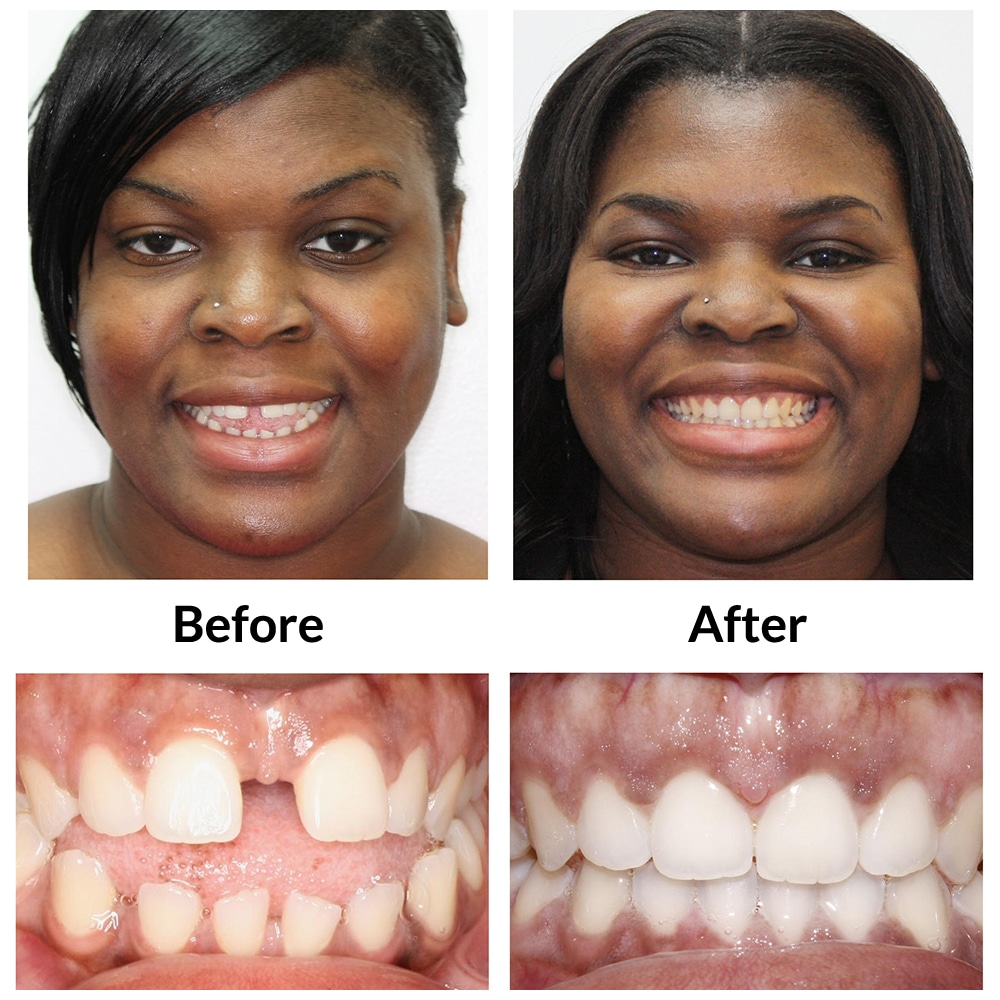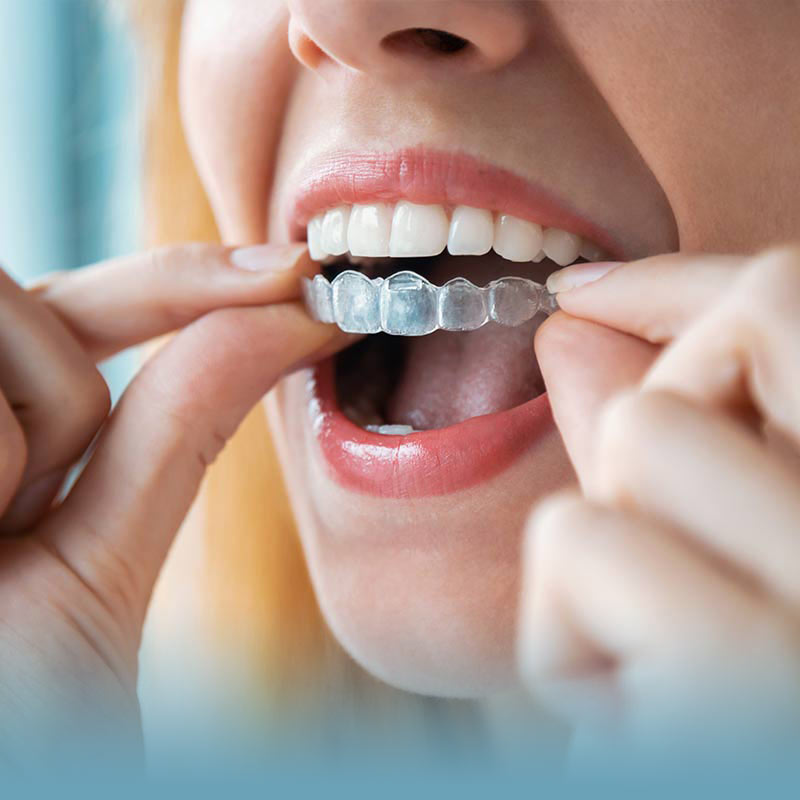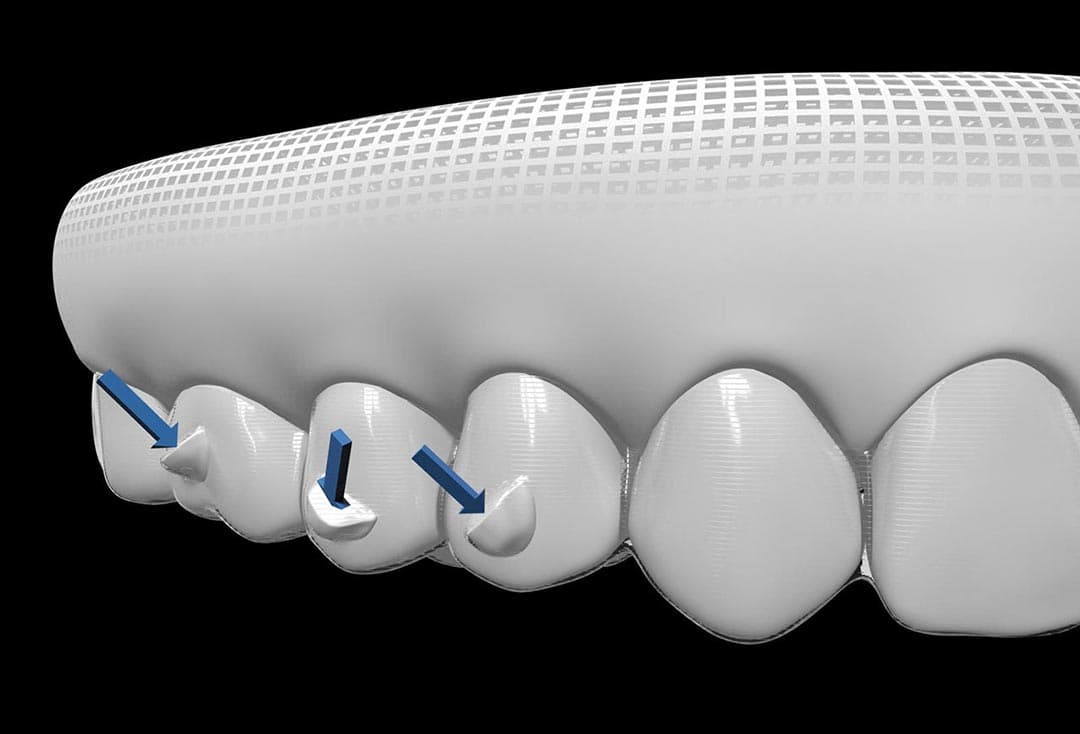Invisalign for Teenagers: A Modern Solution to Straightening Young Smiles
Invisalign for Teenagers: A Modern Solution to Straightening Young Smiles
Blog Article
Invisalign vs. Standard Braces: Which Choice Is Right for You?
When thinking about orthodontic treatment, the selection in between Invisalign and conventional dental braces presents a number of important factors that warrant mindful assessment. Invisalign uses a discreet choice with removable aligners, while conventional dental braces provide a more visible yet reliable solution for extreme imbalance.
Review of Treatment Options

On the other hand, standard braces include steel braces and wires that are bound to the teeth. This approach applies constant stress gradually to attain positioning. While efficient for complex orthodontic issues, standard braces require routine visits for modifications and can present obstacles in maintaining oral hygiene because of the problem of cleaning up about braces and cords.
Both options have their advantages, and the option commonly rests on details oral problems, way of living choices, and patient compliance. Ultimately, speaking with an orthodontic expert is important for figuring out one of the most ideal therapy strategy tailored to private requirements. Comprehending the subtleties of each choice can substantially affect the general success of orthodontic treatment.
Aesthetic Considerations
A considerable aspect affecting the option in between Invisalign and standard dental braces is the aesthetic appeal each treatment offers. Invisalign aligners are crafted from clear plastic, making them virtually invisible when worn. This very discreet look is especially attracting adults and teenagers that might really feel awkward concerning their orthodontic treatment. The ability to keep an all-natural smile throughout the positioning process can significantly enhance the patient's self-confidence in social and expert setups.
On the other hand, standard braces include metal braces and wires, which can be extra recognizable. While developments in orthodontic technology have actually caused the development of smaller sized brackets and colored elastics, standard dental braces still preserve an even more obvious profile. For some individuals, the presence of braces might hinder them from seeking needed treatment.
Eventually, the selection between Invisalign and standard braces may rest on individual preferences pertaining to aesthetics. Individuals that prioritize discretion usually lean toward Invisalign, while those who are much less worried regarding exposure might choose conventional dental braces. Recognizing the aesthetic ramifications of each alternative is crucial for making a notified choice that straightens with one's way of living and preferences.
Comfort and Convenience

In terms of benefit, Invisalign aligners are removable, enabling people to appreciate their preferred foods without limitation and preserve optimal dental health. Cleaning and flossing are simplified, as the aligners can be gotten during these routines, whereas typical dental braces call for cautious maneuvering around brackets and cords.
In addition, Invisalign's dynamic system enables fewer orthodontic gos to. People usually get multiple sets of aligners simultaneously, which can simplify the treatment procedure and decrease time invested in the orthodontist's chair. On the other hand, typical braces demand regular changes, making them less practical for those with busy routines. Invisalign. Overall, the comfort and ease of Invisalign make it an attractive selection for numerous people looking for orthodontic treatment.
Treatment Duration and Performance
While both Invisalign and conventional braces are reliable in correcting dental imbalances, the period of therapy can blog here vary substantially in between the 2 redirected here options. Usually, Invisalign therapy can take anywhere from 12 to 18 months, depending on the complexity of the situation. The clear aligners work by progressively changing teeth right into their desired positions, and regular follow-ups with an orthodontist assistance make sure progression remains on track.
In contrast, standard dental braces frequently require a longer commitment, normally varying from 18 months to 3 years. This is because of their set nature and using cords and braces, which can be extra reliable for extreme imbalances and intricate instances (Invisalign). The therapy performance of typical dental braces is well-documented, as they permit exact modifications and higher control over tooth motion
Eventually, the option in between Invisalign and standard dental braces might hinge on both the anticipated therapy period and the specific dental concerns at hand. Consulting with an orthodontist is vital, as they can give tailored referrals based on private requirements, making certain the selected method straightens with wanted outcomes and durations.
Expense Comparison and Insurance Alternatives
Price plays a significant duty in the decision-making process for individuals thinking about orthodontic therapy, whether going with Invisalign or conventional braces. On standard, the cost of Invisalign ranges from $3,000 to $8,000, while conventional dental braces normally cost between $2,000 and $6,000. Elements influencing these costs include the intricacy of the case, the duration of treatment, and geographical place.
Lots of oral insurance strategies give partial coverage for orthodontic therapies, however the specifics can vary widely. Usually, typical dental braces might be a lot more often covered by insurance coverage plans compared to Invisalign, which some insurers classify as a cosmetic procedure.
In addition, numerous orthodontic techniques supply versatile layaway plan, making both treatment options more obtainable. People need to ask concerning possible financing choices and discounts for in advance repayments. Examining the overall price, consisting of insurance benefits and repayment plans, is crucial for making an educated choice that lines up with both aesthetic preferences and budget plan considerations.

Verdict
In recap, the selection between Invisalign and typical braces rests on multiple aspects, including visual preferences, convenience, therapy period, and expense. news Invisalign uses a discreet, detachable alternative that facilitates oral health and dietary versatility, while traditional dental braces might be preferable for complicated dental problems and commonly come with a lower price factor. Ultimately, assessment with an orthodontist is vital to evaluate individual situations and figure out the most ideal therapy option for attaining ideal oral alignment.
When taking into consideration orthodontic therapy, the selection between Invisalign and conventional braces presents several crucial variables that merit careful evaluation.Contrasting Invisalign and conventional braces discloses distinctive treatment choices for orthodontic adjustment.While both Invisalign and standard braces are reliable in remedying oral imbalances, the period of therapy can vary significantly between the two choices.Cost plays a considerable role in the decision-making process for people considering orthodontic treatment, whether deciding for Invisalign or conventional dental braces.In summary, the choice in between Invisalign and standard dental braces hinges on several factors, including visual preferences, comfort, treatment duration, and price.
Report this page